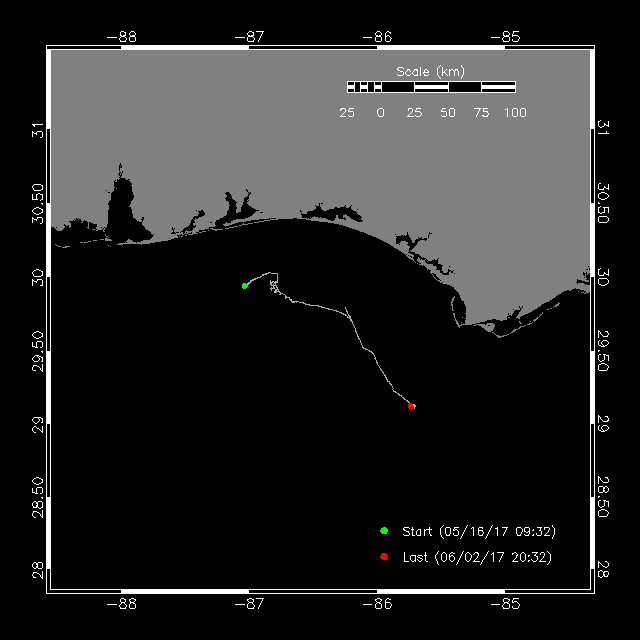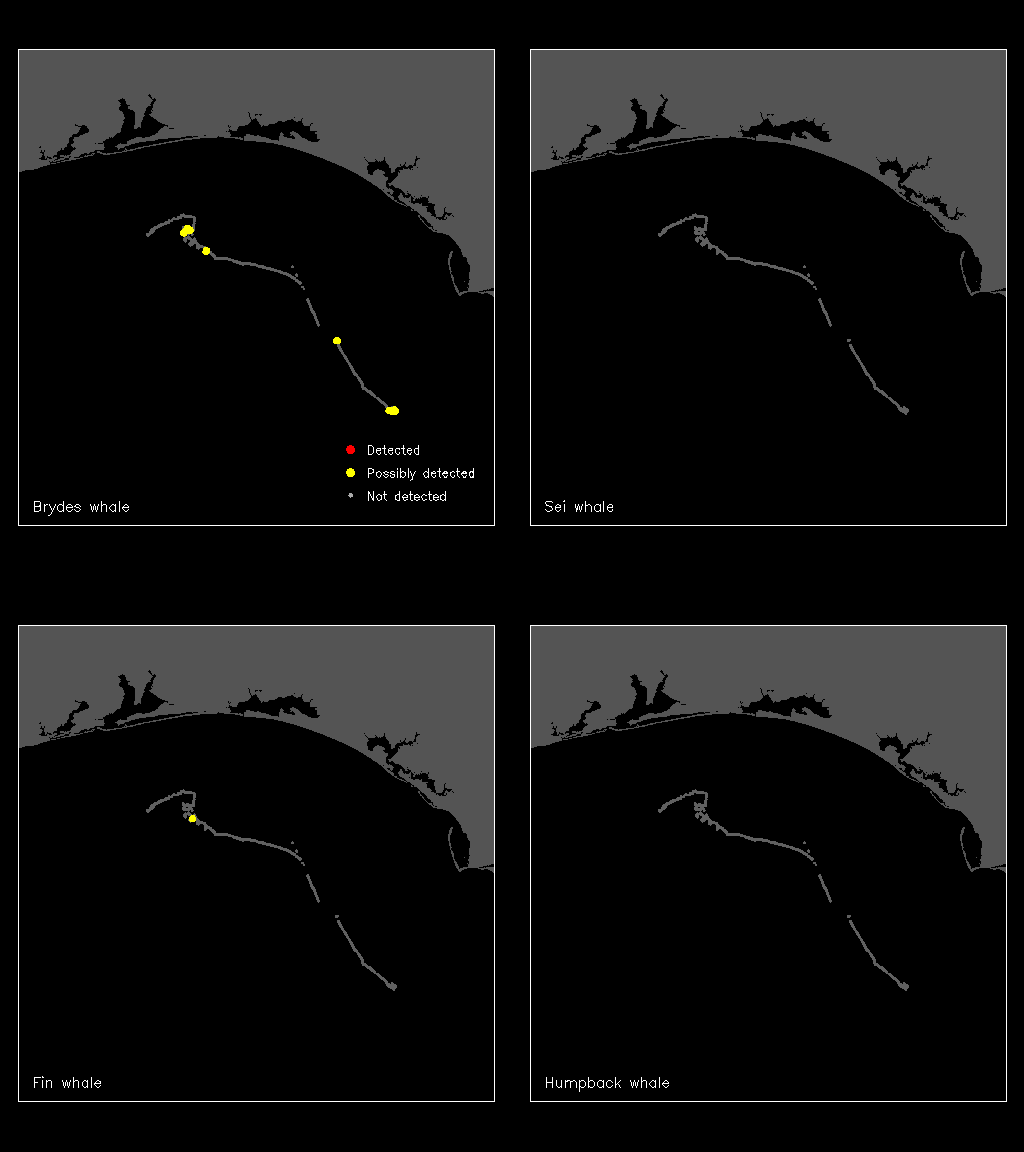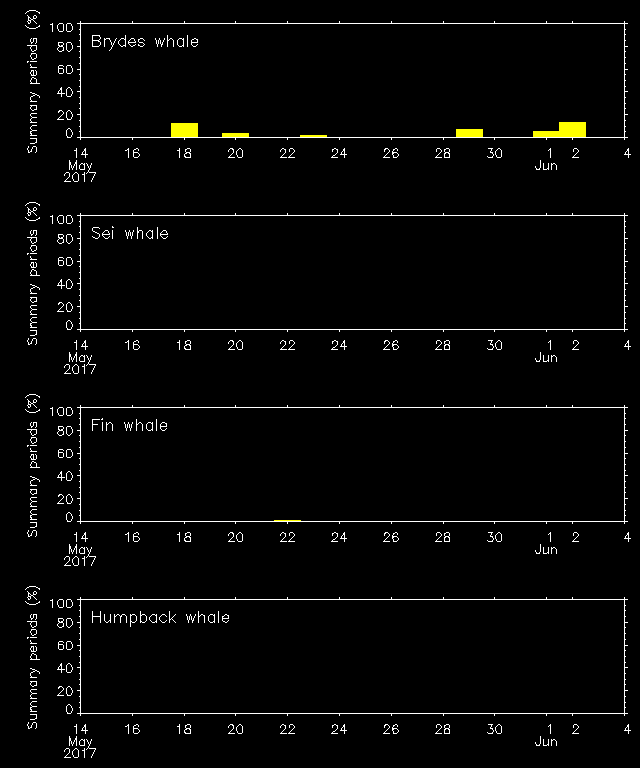Autonomous Real-time Marine Mammal Detections
Woods Hole Oceanographic Institution
Gulf of Mexico, Spring 2017
Study objectives
A Slocum G1 glider was deployed in the Gulf of Mexico as part of a Navy project demonstrating near real-time detection of marine mammal sounds.
Principal Investigators: Mark Baumgartner (WHOI) and Cara Hotchkin (NAVFAC Atlantic).
Platform we10
Platform location:

Daily analyst review:
| | Detected |
| Possibly detected |
| Not detected |
Analyst-reviewed species occurrence maps:

Analyst-reviewed time series:

Analyst-reviewed diel plot:

Links to detailed information for platform we10:
Automated detection data
DMON/LFDCS diagnostics
Platform diagnostics
Questions
Please email Mark Baumgartner at mbaumgartner@whoi.edu. For a general desciption of the detection system and the autonomous platforms, visit dcs.whoi.edu.
Acknowledgements
The Slocum glider was expertly prepared by Ben Hodges (WHOI). Support for the deployment and operation of the glider is provided by the U.S. Navy. Support for the development and testing of the DMON/LFDCS was provided by the Office of Naval Research, and additional support for integration and testing was provided by the NOAA National Marine Fisheries Service Advanced Sampling Technologies Working Group in collaboration with the Northeast Fisheries Science Center's Passive Acoustics Research Group (leader: Sofie Van Parijs).
Home



